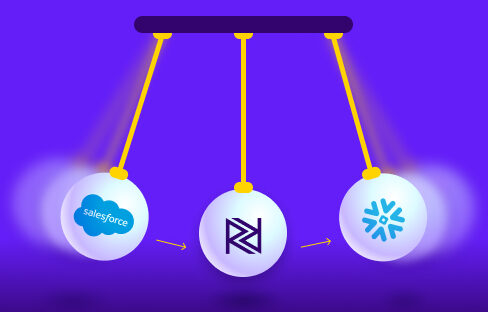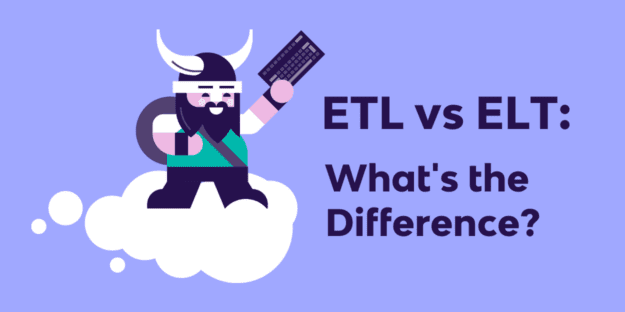Every two years, the volume of data across the world doubles in size. As data grows at unprecedented rates, B2B SaaS companies must convert this information tsunami into efficient business operations.
This is one of the reasons we started Rivery. It’s also why we use Rivery ourselves.
Like any other B2B SaaS company, Rivery has tons of data. Our data is always growing, not just in volume, but also in diversity, location, format, and structure. And with an expanding team, our data needs are ever-changing.
That’s why we use Rivery as the foundation of our B2B sales operation. Rivery makes our company more competitive and more profitable in the data-driven B2B SaaS space.
Read on to learn how Rivery uses Rivery.
Step 1: Centralize Business Data
At Rivery, our Sales and Marketing teams harness many different platforms to generate leads and close deals.
These platforms produce the data we need to successfully execute the sales cycle, from first visit, all the way to post-sale metrics. Some of the key platforms our teams use include:
- Hubspot – Hubspot acts as a CRM and Service Desk platform for us. The platform tracks active deals, contacts, engagements, support tickets, and other key metrics that we employ during the sales cycle. We also use Webhooks to send real-time values into Hubspot.
- MongoDB – MongoDB records metadata for Rivery objects, such as accounts and data pipelines. This reveals how prospects and customers are using the platform, so we can better assess and assist their technical needs.
- MySQL – MySQL is also used to capture metadata for Rivery objects, including users, environments, and consumption within the platform, so we can help prospects and customers maximize the technical aspects of the platform
- Netsuite – Netsuite is a cloud ERP platform that allows us to track customer invoicing over time. This empowers our teams to track post-sale processes to ensure customer success.
We have the same exact problem as our customers. Our teams generate so much incisive data, but all of it is stored on disparate, isolated platforms. We need a way to centralize our data so we can combine and analyze it.
That’s why, like so many of our customers, we’ve turned to our technology partner Snowflake.

Why Snowflake? Snowflake is a cloud data warehouse for modern teams. It’s robust, customizable, and easy-to-use. And its JSON handling functionality rocks.
However, Snowflake still needs a way to connect to the APIs of Hubspot, MySQL, MongoDB, and Netsuite to extract our data. But building these data connectors from scratch requires significant time, effort, and dev resources that most companies don’t have.
And that’s where Rivery comes in. Rivery provides 150+ pre-built data connectors right out of the box, with plug-and-play functionality.
Additionally, we also offer a data connector on-demand service, and a Custom API that allows teams to manually connect to any API.
This enables us to centralize all of our raw data in Snowflake in a matter of clicks, as opposed to performing weeks or months of labor.
Connecting to Hubspot with Rivery

Connecting to MySQL with Rivery

Step 2: Generate Business Intelligence
The next step is generating business insights. We use Rivery’s data transformation and orchestration capabilities to create our data models in Snowflake. This produces datasets that Tableau, our BI platform of choice, can easily process downstream.
Tableau uses this data to generate business intelligence dashboards that our teams can harness to gain insight during the sales cycle.

As an ELT platform, Rivery transforms raw data directly inside Snowflake. Rivery performs in-database, user-defined executions of SQL queries.
This transformation process converts our raw data into structured data that Tableau can use in its BI workflows. Rivery can also load and transform data simultaneously, speeding up the operationalization of business intelligence across our teams.
We also make frequent use of Logic Rivers for automation. Logic Rivers orchestrate the entire data integration process, from data extraction, to data ingestion, to data transformation.
Logic Rivers automate both the ingestion of data (Hubspot, MySQL, Netsuite, MongoDB) and the execution of SQL queries inside Snowflake for data transformation.
This automatically produces the structured data that Tableau needs within a single data workflow, improving speed and efficiency of our teams within the sales cycle.


Once it receives the structured data, Tableau can generate critical business intelligence. This often involves connecting our product usage data (MySQL and MongoDB) to our CRM and Service Desk data (Hubspot).
By combining these diverse data sources, Tableau produces granular and comprehensive overviews of our free trial accounts, onboarding initiatives, customer health profiles, growth projections, and potential churn that our team members can then use to drive success in the sales cycle.
Step 3: Operationalize Business Intelligence
Lastly, and most importantly, we operationalize business intelligence in the sales cycle. By using automation, we trigger key alerts in Slack to the Sales, Customer Success, and Marketing teams whenever an important event occurs.
This not only alerts team members to events in the sales cycle right away, but also expedites the response process by providing critical information.
For example, if a user in one of our free trial accounts experiences an error, a Slack ‘alert’ channel notifies us with a message that includes all the information we need to respond:

The associated Sales Engineer can click the associated URL right from the Slack message, and assist the user with the issue immediately.
This ensures that prospects and customers have a smooth user experience, creating less friction in the sales cycle.
And these alerts can be triggered for any event in the sales cycle: new leads, support tickets, or anything else our teams want to stay on top of.
Here’s how it works. Rivery transforms raw data in Snowflake into a format that Hubspot can process. The data is then sent to Hubspot in real-time via a Webhook.
In Hubspot, the data triggers workflow automation if a “custom property” has changed. These custom properties represent key events in our sales cycle.

Once triggered, the Hubspot workflow initiates a Slack alert in our team channels. From there, our teams can react near-instantaneously to the sales cycle event.
At Rivery, We Practice What We Preach
At Rivery, we don’t just sell our product. And we don’t just use our product, either. Rivery is, as it is for so many of our customers, the backbone of our data operation.
We’ve harnessed Rivery to build a nimble and rapid B2B SaaS sales operation that ensures continuous success for our prospects and customers. And this, in turn, has led us to the ultimate goal: more closed deals and increased revenue.
Of course, this is just one way to build a sales operation with Rivery. If you have your own unique use case you’d like to share, please reach out! We’d love to highlight you in a Customer Spotlight.
Minimize the firefighting. Maximize ROI on pipelines.





